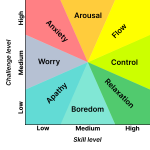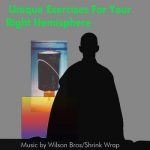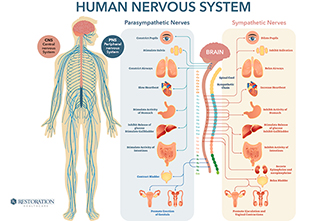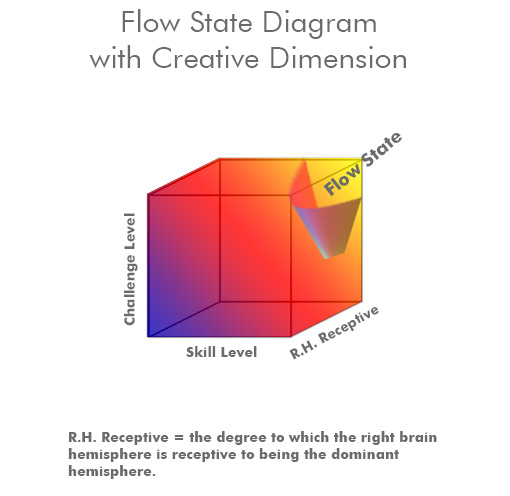Overview
The “flow state” concept was initially introduced by the noted psychologist Mihály Csíkszentmihályi in 1975. As a testimony to its popularity and modern day relevance, this concept still remains actively discussed and researched in today’s scientific community.
Before we dive into the concept of flow we first need to understand the Autonomic Nervous System (ANS). Your ANS is made up of two primary branches: your sympathetic system (fight, flight, or freeze mode) and your parasympathetic system (rest, digest, and recover mode). Your sympathetic system helps to alert you to threats and engage your body so you can respond to those threats (ex. quickened heart rate, increased sweating, etc.) On the other hand, your parasympathetic system turns on to allow your body and mind to relax, recover, and even digest food after meals (relaxing in flow state: how flow can regulate your nervous system).
As we approach a consensus on the definition of “flow” it might be useful to break down this newly discovered altered state of consciousness, often referred to as “the flow state”, into two categories. The first category we will refer to as “the active flow experience”, and the second as “ the passive flow experience “.
With the understanding that these two subsets have many underlying similarities, we will explore these both in more detail.
The Active Flow Experience
The Active Flow Experience is when you are simultaneously relaxed and focused. It is a mental and physical state many describe as “in the zone”— where you are completely engaged with the activity at hand and the activity is rewarding in of itself. Flow feels timeless as your whole being is absorbed with an activity, and you feel a sense of control over the situation and outcome. The Active Flow Experience includes, and perhaps even emphasizes, the sympathetic nervous system while simultaneously engaging the parasympathetic system. Ideally, they are in balance.

The Passive Flow Experience
Passive Flow is very similar to Active Flow, except the participant is not necessarily engaged in some goal oriented activity.

Meditation is a good example of the “passive flow experience” and has been scientifically proven, using EEG technology, to induce activation of the parasympathetic nervous system (relaxation). It has also been shown to put the meditator into the alpha state.
Another method of achieving Passive Flow is through the use of the Adagio Peace Machine. This visual device has been scientifically validated in a biofeedback experiment to activate the right brain hemisphere.
 The left brain largely receives connections from the parasympathetic system, while the right brain largely receives connections from the sympathetic system. The left hemisphere is typically the dominate hemisphere in Western societies (unfortunately we have become dangerously “unbalanced” in our society – too much logical thinking and not enough “heart and soul”!).
The left brain largely receives connections from the parasympathetic system, while the right brain largely receives connections from the sympathetic system. The left hemisphere is typically the dominate hemisphere in Western societies (unfortunately we have become dangerously “unbalanced” in our society – too much logical thinking and not enough “heart and soul”!).
The Adagio has been proven to “occupy” the right brain hemisphere. With the right hemisphere activated, the left hemisphere (linked with the parasympathetic system) has more “free time and energy” to bring the human mind (and body) back into a more balanced and relaxed state.
It is also hypothesized that while watching the Adagio the participant lapses into the theta state. The ideation that can take place during the theta state is often free flow cognition, and occurs without censorship or guilt.
If you have ever driven down a relatively uncrowded freeway for several hours you most likely have lapsed into the theta state of mind. While in this state you often invoke pleasant memories and/or come up with solutions to problems or perhaps new creative ideas pop into your head.
Theta is a very positive mental state to be in. You are “suspended in time” and often can’t recall where you have been and/or seen while driving down the freeway. It is much like having a daydream – time comes to a stand still. You are suspended in time and space and you are “in flow”.
Entering the Flow State Via Music
Music has proven to be an excellent vehicle for inducing the flow state. If you are a musician actively creating music, especially in live performance, you very much want to be in the active flow state. This is often referred to by jazz musicians as “in the groove”. It is like being “at one” with the music and with your fellow musicians in a beautiful transcendental space and time. The musicians are totally in sync with one another, knowing intuitively what each is going to do next. It’s almost like being Mr. Spock (a Star Trek character) performing one of his famous “mind melds”!
If you are listening to music that is IN FLOW, both compositionally as well as in performance, you will likely be transported to the peaceful passive flow state in the process.
Both performer and audience should enjoy the many benefits as described above under “Active Flow” and “Passive Flow” respectively, Both flow states are a very enjoyable and positive experience to the degree that many assert seeking flow can become almost addictive!
Final Thoughts
Both types of flow, active and passive, are linked to right brain hemisphere activation which in turn elicits a relaxation response. A number of diseases are well understood to be related to stress. Here is a short list of some of these diseases:
- PTSD
- Heart Disease
- Asthma
- Depression and Anxiety
- Inmate Rehabilitation
- Substance Abuse
- And many others
It is hypothesized that experiencing passive flow makes it much easier to transition into active flow, i.e., having solid experience with entering passive flow provides a solid launching pad from which to enter active flow. In any case, all agree, and I can personally attest to myself (“active” by playing in jazz groups, and “passive” by working with the Adagio) that the flow experience is a very positive and desirable experience indeed.

Article by JR Wilson